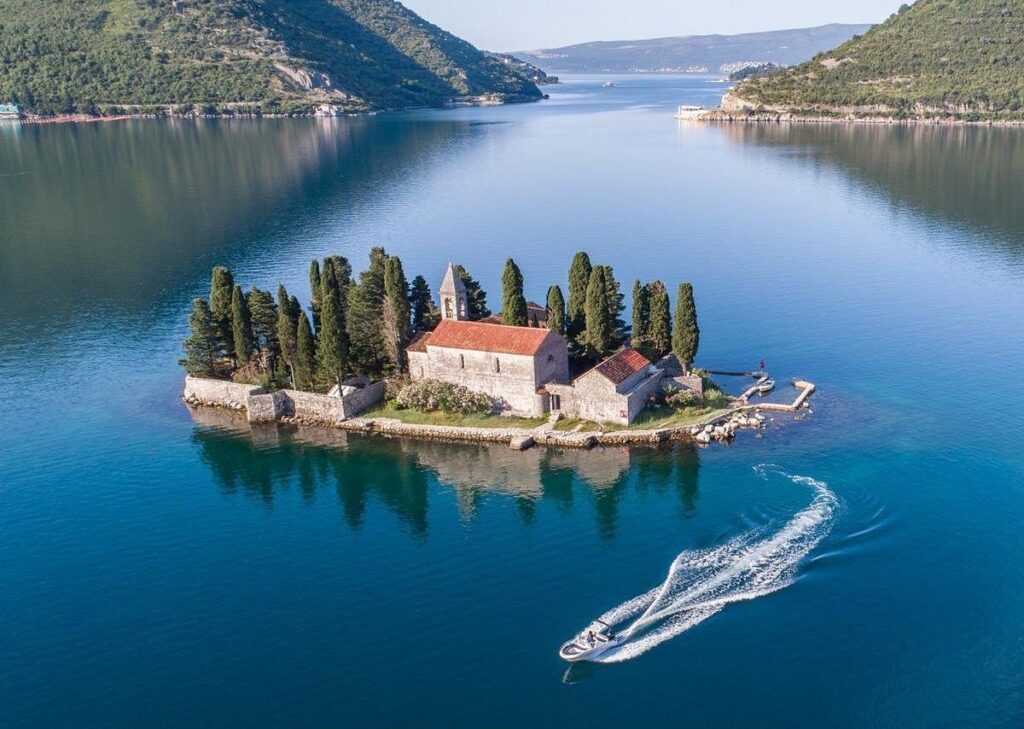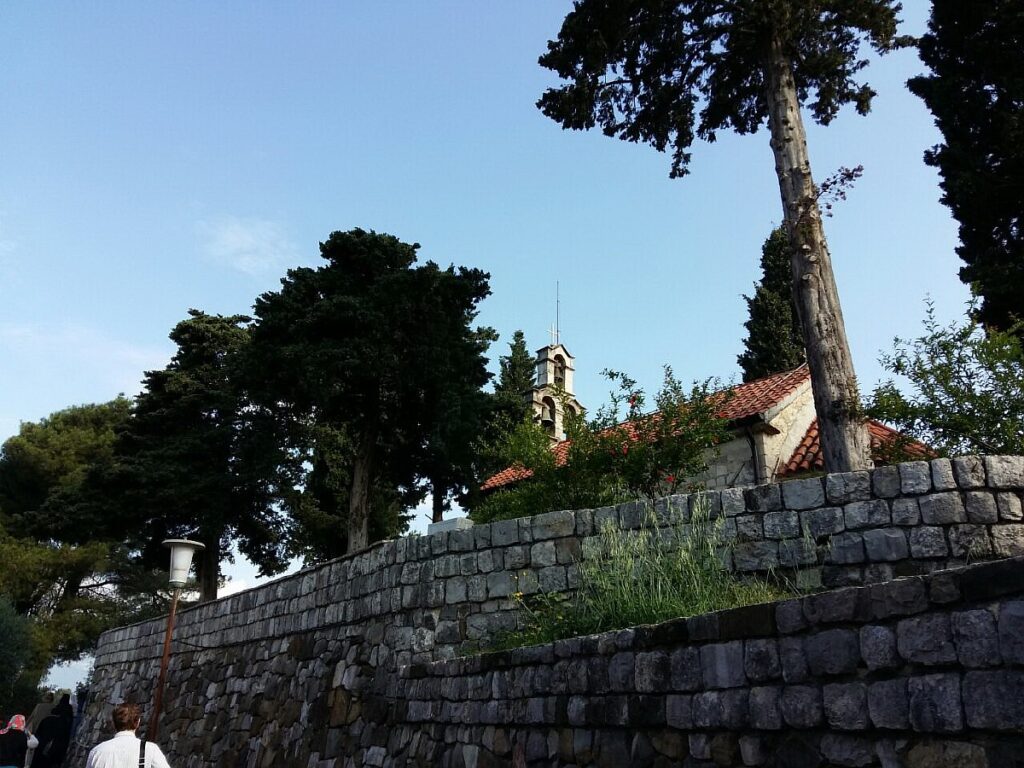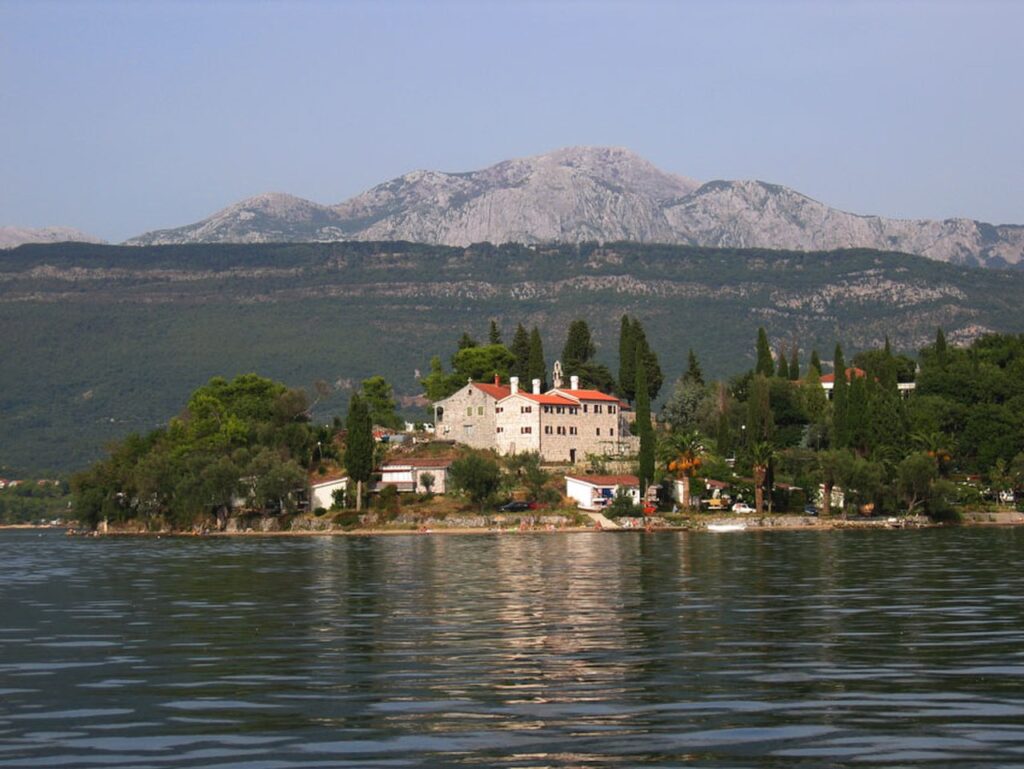Montenegro's Island of Flowers Geography
Nestled in the shimmering Adriatic Sea, the Montenegro’s island of flowers geography, locally known as “Ostrvo Cvijeća”, boasts a unique geographical position that makes it a gem on the Montenegrin coastline. Positioned close to the town of Tivat, this picturesque isle paints a serene picture against the backdrop of vast blue waters and towering mountain ranges.
With its relatively small size, the Island of Flowers offers a surprisingly diverse landscape, marked by lush vegetation, well-preserved green spaces, and an array of native flora. The island’s terrain is moderately hilly, giving visitors numerous vantage points from which they can admire the panoramic views of Montenegro’s coastline and the broader Adriatic. Olive groves, intertwined with patches of fragrant lavender and rosemary, contribute to the island’s namesake, presenting a colorful mosaic of blooms especially during spring and summer.
Its proximity to the mainland ensures that the Island of Flowers is easily accessible by boat, making it a favored destination for both local residents and international tourists. This geographic advantage has facilitated a rich history of trade, cultural exchange, and maritime activities that date back centuries.
In conclusion, the Montenegro’s Island of flowers geography stands as a testament to nature’s splendor, blending seamlessly with its rich topography and strategic location in the Adriatic. Whether one is drawn to its verdant landscapes or its tranquil shores, the island offers a refreshing escape from the hustle and bustle of urban life.

Historiy of the Island of Flowers in Montenegro
The Island of Flowers, nestled along Montenegro’s picturesque coastline, has witnessed a myriad of historical events that have shaped both its destiny and that of the nation surrounding it. This charming island, known locally as “Ostrvo Cvijeća”, has always been a crucial nexus between the maritime and mainland realms of Montenegro.
In ancient times, the Island of Flowers was more than just a scenic retreat; it was a strategic point. With its proximity to major maritime routes, it played a pivotal role in trade and commerce. Montenegro, with its rich maritime tradition, leveraged the island’s unique position to foster connections with neighboring territories. The historical records and archaeological finds suggest the island was intermittently inhabited by various civilizations, each leaving behind traces of their culture and influence.
Centuries passed, and with the rise and fall of empires, the history of the island of flowers in Montenegro bore witness to a multitude of changes. It served as a refuge during conflicts, a place of worship, and even as a trading hub. The island’s historical significance is not just limited to its economic activities; it’s also deeply intertwined with Montenegro’s cultural and religious evolution. Monastic establishments on the island, for instance, have played a pivotal role in preserving the orthodox Christian traditions of the region.
In recent times, as Montenegro began to emerge as a sought-after tourist destination, the Island of Flowers regained its prominence. It stands today not just as a testament to the country’s rich history but also as a beacon attracting travelers from around the world.
History of the island of flowers in Montenegro is to delve deep into Montenegro’s historical tapestry, appreciating the myriad of influences and events that have shaped this beautiful Adriatic jewel.

Flora and Fauna of the Island of Flowers
Nestled in the heart of the Adriatic Sea, the Island of Flowers in Montenegro boasts a diverse tapestry of life that mirrors its rich history. The island’s unique geographical position and temperate Mediterranean climate have culminated in a vibrant ecosystem teeming with life.
The flora and fauna of the island of Flowers are adorned with a variety of plant species, some of which are endemic to this region. Olive trees, with their silver-toned leaves, can be found scattered around, a testament to the island’s historical association with olive oil production. Intermingled with the groves are aromatic herbs such as rosemary, lavender, and thyme, which not only enhance the island’s aesthetic appeal but also serve culinary and medicinal purposes.
However, the botanical treasures of the Island of Flowers don’t end there. Walking its length and breadth, one can also find a mosaic of wildflowers, including the vibrant Montenegrin iris, that paints the island with a myriad of colors during the blooming season.
Complementing this lush vegetation is the island’s diverse wildlife. While the Island of Flowers in Montenegro might be small in size, it’s a haven for various bird species, making it a paradise for ornithologists and bird-watching enthusiasts. From seagulls soaring above the coastline to the melodious songbirds hidden in the foliage, the avian symphony is a treat to the senses.
Insects, too, play an integral role in maintaining the ecological balance of the island. Butterflies, with their exquisite patterns, flit about, pollinating flowers and adding to the island’s charm.
In conclusion, the flora and fauna of the island of Flowers stands as a testament to nature’s splendor, where every leaf and every chirp tells a story. A visit here offers not just serenity and scenic beauty but also an intimate experience with the rich biodiversity of Montenegro’s treasured isle.

Tourism on the Island of Flowers in Montenegro
Tucked away in the shimmering waters of the Adriatic Sea, the tourism on the island of flowers in Montenegro has increasingly become a sought-after destination for travelers worldwide. Its natural splendor combined with rich cultural heritage crafts an unforgettable experience for those fortunate enough to visit.
A major draw for tourists is the island’s pristine beaches. Lined with olive groves and scented by aromatic herbs, these shores offer a tranquil escape from the bustling mainland. The crystal-clear waters beckon swimmers, divers, and sailors alike, making the Island of Flowers a haven for aquatic enthusiasts.
Yet, the appeal of this Montenegrin gem goes beyond its natural allure. Cultural events, deeply rooted in the island’s history and traditions, are integral to the Island of Flowers experience. Throughout the year, locals and tourists gather in numbers to celebrate various festivals and ceremonies that are reminiscent of the old world charm.
One such event is the annual Flower Festival. As the name suggests, it’s a celebration of the island’s botanical wonders. During this time, streets are adorned with vibrant floral arrangements, and stalls sell everything from rare plant species to traditional herbal concoctions. This festival not only showcases the island’s rich flora but also emphasizes the deep connection the locals have with their environment.
Moreover, the Island of Flowers in Montenegro plays host to various music and dance performances, often set against the backdrop of historical sites or open beaches. These events, accompanied by traditional Montenegrin music, allow visitors to immerse themselves in the cultural tapestry of the island.
In conclusion, tourism on the island of Flowers in Montenegro offers a harmonious blend of nature and culture. Whether you’re a nature enthusiast, a history buff, or someone seeking a peaceful retreat, this Montenegrin paradise promises memories that will last a lifetime.

